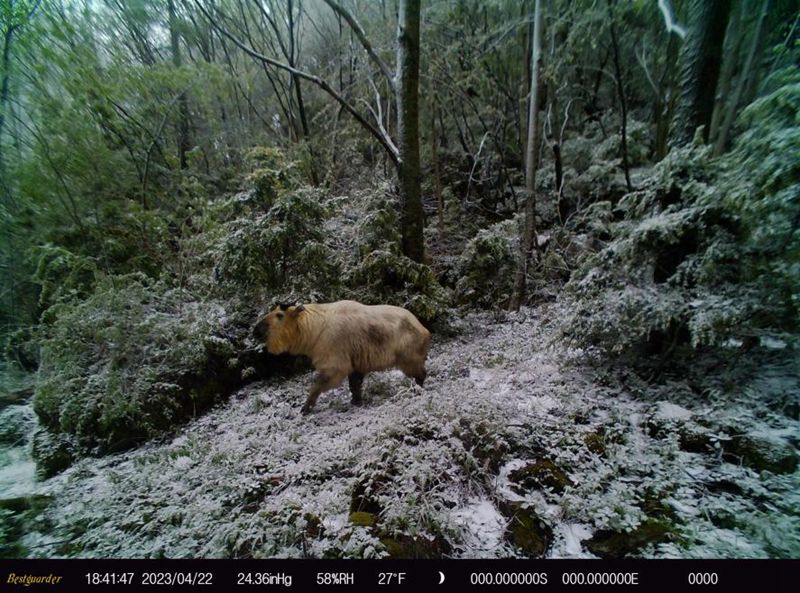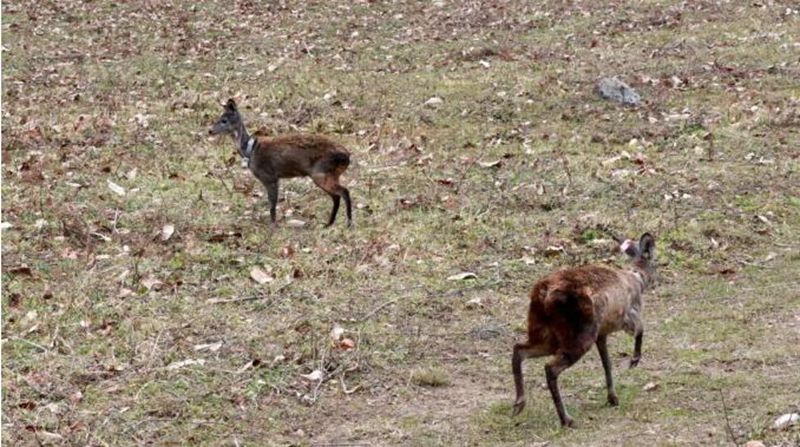China's Qinling Mountains a haven for rare species
Dubbed the "kingdom of animals and plants" and a "natural store of traditional Chinese medicinal herbs," the majestic Qinling Mountains are a natural boundary between China's north and south. Over 90 percent of the wild animal and plant species that live in these mountains are under effective protection.

Photo shows a section of the Qinling Mountains at the border between Foping county and Zhouzhi county in northwest China's Shaanxi Province. (File photo/Li Jie)
Today, the central section of the Qinling Mountains in northwest China's Shaanxi Province harbors more than 580 terrestrial wild vertebrate species and over 3,800 plant species.
Among these, 119 wild animal species and 22 wild plant species are on China's list of Wild Animals under State Priority Conservation and the list of Wild Plants under State Priority Conservation, respectively.
"The activities of wild animals can demonstrate the state of the ecological environments in their habitats," a staff member of Zhouzhi National Nature Reserve on the northern slopes of the Qinling Mountains told People's Daily Online.

The photo captured by an infrared camera shows a takin foraging in the Qinling Mountains in northwest China's Shaanxi Province.
According to the staff member, the nature reserve, located in Zhouzhi county, Shaanxi Province, has installed 272 infrared cameras in the Qinling Mountains since August 2012.
In the first half of this year, these infrared cameras captured the activities of 24 wild animal species, including six species under first-class national protection in China. Those captured include giant pandas, golden snub-nosed monkeys, takins, Chinese forest musk deer, leopards, and Asian golden cats, as well as 10 wild animal species under second-class national protection.
On Nov. 21, 10 artificially bred Chinese forest musk deer, after undergoing a year of rewilding training, were released into the Qinling Mountains.
Boasting a superior ecological environment, the Qinling Mountains are important distribution areas for the Chinese forest musk deer, stated an official of the Shaanxi Provincial Forestry Bureau.
Besides wild animals, the Qinling Mountains also shelter rare plants under first-class national protection in China, such as Taxus chinensis and Kingdonia uniflora.
Taxus chinensis, often called the "giant panda of plants," is an iconic tree species in the Qinling Mountains. Due to its slow growth in natural conditions and poor regenerative capabilities, large wild clusters of this tree are rare.

Chinese forest musk deer gallop in the Qinling Mountains, located in northwest China's Shaanxi Province. (Photo courtesy of the Shaanxi Provincial Forestry Bureau)
In September, researchers discovered over 1,000 wild Taxus chinensis trees, some up to 300 years old, at an altitude of 1,922 meters in the Qinling Mountains.
"I've been studying Taxus chinensis for over 30 years, and this is the first time I've encountered such large clusters at such a high elevation. They are incredibly valuable for research," said Qian Shuanti, a professor at Yangling Vocational and Technical College in Yangling, Shaanxi.
Thanks to Shaanxi Province's continuous conservation efforts, the populations of all four signature wild animal species of the Qinling Mountains – namely, the giant panda, golden snub-nosed monkey, takin, and crested ibis – have grown steadily, according to provincial forestry authorities.
Official monitoring data show that the number of wild giant pandas has increased from 273 to 345. Additionally, the populations of wild golden snub-nosed monkeys and takins have both exceeded 5,000, and the crested ibis population has rebounded from just seven to over 11,000.

Photo shows Taxus chinensis trees, commonly known as Chinese yew, in the Qinling Mountains in northwest China's Shaanxi Province. (Photo courtesy of Yingzuishi Nature Reserve in Shaanxi)
Photos
Related Stories
Copyright © 2023 People's Daily Online. All Rights Reserved.









